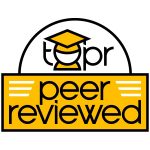Tags: Assessment, Feedback, Metacognition, Peer-Reviewed Entry, Reflection

Description
Traditionally, feedback on student work is a one-way communication from instructor to student. Due to the inherent complexity of unilateral feedback, students may feel emotional and psychological impacts, a lack of power or autonomy, or demotivation. Re-engineering this process to include student-instructor dialogue in order to break down one-way flow provides space for interactive exchanges where thoughts and ideas are shared and requirements are interpreted and clarified. With this shift to a dialogic, interactive practice, the goal becomes helping students develop reflective and metacognitive skills that can be used long after they leave our classrooms.
Ideas about the worth of reflective practice have been around for centuries: the ancient Greeks understood the value of metacognition, and Dewey and Piaget recognized the power of reflective assessment as integral to learning (Bond, 2006). According to Yan and Brown (2017), reflective practice helps students engage in the learning process and to understand their strengths and weaknesses, and Fiona, Whipp, Gagné, and Van Quaquebeke (2018) discuss the ways that two-way feedback offers autonomy and can help students develop metacognitive skills.
A feedback cycle focused on respective inquiry (teacher-initiated questioning) and reflective practice (student-centered reflection on their own work) relies on spoken or written dialogue and emphasizes students’ roles in understanding feedback and using it to develop self-evaluative habits. This sort of interactive exchange promotes increased engagement and intrinsic motivation, helps students to understand that they are capable of directing their own learning, and can increase interpersonal security and connectedness (Fiona et al., 2018).
Specific Example of Strategy Implementation
In the writing-intensive course Geography 438W: Human Dimensions of Global Warming, students participate in reflective practice on a two-way street where they engage in conversations with the instructor about their experiences, their work, and their habits. The self-assessment worksheet (issued after the first round of writing – first drafts submitted for editing and final drafts submitted as an exam) promotes dialog around learning and growth, and, therefore, is more of “an assessment for learning than an assessment of learning” (Baliram & Ellis, 2019, p. 95). Students are asked about their perceived strengths and weaknesses, the strategies they employ, and what they find most challenging. The instructor provides initial questions, feedback on students’ initial answers, and encouragement for continued dialog surrounding student outlooks and work. For subsequent exams, the self-assessment worksheet challenges students to reflect on the previous exam(s) to identify their strengths and weaknesses and determine how their writing is improving over the course of the semester. When students take the time to consider how they think they are doing, what they might be missing, and ways they might improve, their consciousness of how they think and learn is raised (Baliram & Ellis, 2019).
The interactive rubric for writing assignments in the Human Dimensions of Global Warming course is provided to students with the intention that self-reflection and discussion be integral to the learning and assessment processes. Employing a conversational tone, the rubric is fully student-centered to encourage engagement and focuses on helping students consider their strengths, weaknesses, and avenues toward improvement. Students are to assess their work and mark the rubric according to the instructions provided, and instructors do the same. Students and instructors can then consider the completed rubric, which provides a clear visual display of the similarities and discrepancies between student and instructor evaluations, and discuss the results together. This interactive, reflective activity fosters safety and connectedness, the potential to increase feelings of student agency and motivation, and enhances the quality of learning in this course. Furthermore, students practice with these self-reflective and metacognitive skills will serve them in future work in and outside of the classroom.
Link to Example Artifact(s)
Link to Scholarly References
Baliram, N., & Ellis, A. (2019). The impact of metacognitive practice and teacher feedback on academic achievement in mathematics. School Science and Mathematics Association, 119, 94-104. https://doi: 101111/ssm.12317
Bond, J. (2006). Reflective assessment: Including students in the assessment process. Forum on Public Policy. Retrieved from http://www.forumonpublicpolicy.com/archivesum07/bond.pdf
Fiona, D. H., Whipp, P., Gagné, M., & Van Quaquebeke, N. (2018). Students’ perception of teachers’ two-way feedback interactions that impact learning. Social Psychology of Education, 22, 169-187. https://doi.org/10.1007/s11218-018-9473-7
Yan, Z., & Brown, G.T.L. (2017). A cyclical self-assessment process: Towards a model of how students engage in self-assessment. Assessment & Evaluation in Higher Education, (42)8, 1247-1262. https://doi.org/10.1080/02602938.2016.1260091
Citation
Wherley, M., & Robinson, B. (2020). Disrupt the one-way street of feedback to encourage reflective practice. In A. deNoyelles, A. Albrecht, S. Bauer, & S. Wyatt (Eds.), Teaching Online Pedagogical Repository. Orlando, FL: University of Central Florida Center for Distributed Learning. https://topr.online.ucf.edu/disrupt-the-one-way-street-of-feedback-to-encourage-reflective-practice/.Post Revisions:
- July 30, 2020 @ 18:52:17 [Current Revision]
- June 11, 2020 @ 01:33:26
- March 10, 2020 @ 14:50:18

